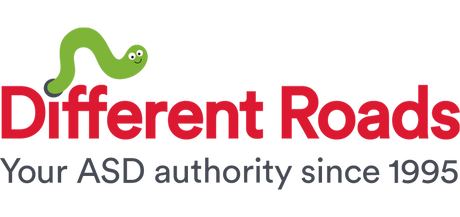Everyone does it! In a global pandemic, we do it more since our mouths are covered by masks.
What is it? Some people call them signs, talking with your hands, body language, and if we want to get real fancy, gesticulations…
But let’s keep it simple… gestures.
My newest favorite gesture, in this era of Zoom meetings, is to silently give the double thumbs up to communicate my happiness when one of my team members has a good idea or is asking for a response. I learned this gesture from my 16-year-old daughter, who uses it during her face time interactions with friends and Zoom virtual schooling. Since it is hard to talk in groups over Zoom, this subtle and fun gesture allows for effective communication and proof of engagement.
Are gestures a big deal to communication?
In short, YES! There are many different types of gestures, and many different names that go along with these gestures. To simplify the categories and language, I will be focusing today on gestures that serve two functions: for requesting and sharing communication.
Requesting gestures are used to gain something from another person. A young child may point at a toy that is out of reach so his mother can grab it. You may hand your friend a jar that is tightly shut to ask for help with opening it. Without words, communication is clearly happening between people.
On the other hand, requests for sharing communication are those gestures used to communicate an interest, or lack of interest in something. For example, pointing to the loud, annoying helicopter in the sky or showing that new trending social media video to your friend. These communicative gestures are integrated seamlessly and automatically into our daily interactions with others.
Do I need to teach gestures?
Yes! There are natural differences between people in how much they use their bodies when orally communicating with another person. But from a developmental perspective, gesturing is an important aspect to early communication skills.
Gesturing actually helps facilitate language development. Child-initiated gestures engage attention and language, and increase word and concept development. Gestures reflect what the children know, and provide opportunity for developmental change. Gesturing in young children is predictive of later language skills such as expressive vocabulary, but also of perspective taking and abstract thinking. Lack of gestures in very young children may indicate developmental concerns.
Recently some professionals and parents of older preverbal children have expressed resistance to including gestures as a language target – stating that intense focus should be placed on oral language or assistive technology, and claiming that gestures will replace the child’s use of broader communication. This fear is unfounded, and research supports the benefit of gestures throughout development to facilitate and assist, not to hinder.
A child’s language abilities should not dictate whether or not gestures are taught. Further, gestures should be taught along with other communication modalities, regardless of what method of communication your preverbal child is learning. Whether they use sounds, word approximations or sound generating devices, gestures enhance communication skills across their lifetime.
This PCSES curriculum, though it provides activities to teach various early social behaviors with both adults and peers, also focuses on teaching early initiating and responding gestures. This includes teaching your child to gesture “up” to be carried, teaching your child to give high fives to friends, and even teaching your child to lead you to something cool to share.
Where should I begin?
So how do you integrate these gestures? It’s simple. Pick one gesture to teach, then model that gesture across different activities. Your child, in return, should imitate your model in all opportunities. I am a big proponent of social reinforcement, so please don’t forget to praise your child for gesturing. For example, you want to teach the “high five” gesture. Easy. Plan to do some fun and easy gross motor activities with your child like jumping forward on the lines found on concrete sidewalks. After each jump (or attempt), raise your hand to receive the high five gesture from your child. Once they give you the high five, socially praise by saying, “Wow, awesome high five!” Your child may need some physical support at first, and that’s okay too. Reinforce all high fives. One more thing to keep in mind. Focus your attention on the gesture being taught, not how well your child completes the activity. That can be left for another day.
I’m pointing at you all right now with a tilt of my head, followed by a thumbs up, and a high five.
Capone, N. C., & McGregor, K. K. (2004). Gesture development: A review for clinical and research practices. Journal of Speech, Language, and Hearing Research, 47, 173-186.
Crais, E., Douglas, D. D., & Campbell, C. C. (2004). The intersection of the development of gestures and intentionality. Journal of Speech, Language, and Hearing Research 47, 678–694.
Goldin-Meadow, S. (2009). How gesture promotes learning through childhood. Child Development Perspectives, 3, 106-111.
Manwaring, S.S., Stevens, A.L., Mowdood, A., & Lackey, M., (2018). A scoping review of deictic gesture use in toddlers with or at-risk for autism spectrum disorder. Autism & Developmental Language Impairments, 3, 1-27.
Written by Stephanny Freeman PhD
